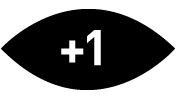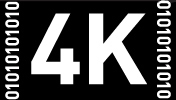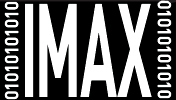

Star Wars devotees can now look forward to a new adventure set a long time ago in a galaxy far far away about once a year, from 2015 until a day comes when people no longer want to buy tickets. In between the continuing episodes in the Star Wars saga, Disney/Lucasfilm will release “stand-alone” features in their new Star Wars Anthology series. These side movies tell origin stories, like the forthcoming young Han Solo movie; spin-off favorite characters like Boba Fett to star in their own pictures; and fill in gaps or illuminate backstories from the original trilogy. The first of these releases falls in the latter category. Rogue One tells the story of the brave band of rebels who capture the plans for the planet-killing space station, the Death Star. These plans are the MacGuffin that the heroes of Star Wars (1977) are in pursuit of—and an excellent MacGuffin they are. Of course, much of what makes such a plot device effective is its enigmatic quality. Prequels (especially the three official Star Wars prequels) are notorious for diminishing, denigrating, and even destroying the mystery that surrounds the backstories contained within classic movies by putting on screen something inferior to what lives in the collective imagination of audiences. Still, the idea of creating a small-scale feature about the unknown team who captured the data tapes containing the Death Star plans would seem like a superb way to launch this new sub-series.
Unfortunately, anyone expecting an updated spin on the archetypal guys-on-a-mission genre set within the Star Wars milieu will be disappointed. Rogue One is not like The Guns of Navarone with wookies, droids, and stormtroopers. It’s more like the previous year’s Star Wars: The Force Awakens, but without any characters or actors you can get emotionally invested in. Most viewers, including me, were shocked at how satisfying J. J. Abrams’ reboot was as a sequel and an engaging film in its own right. Despite being so derivative of the original 1977 picture that it was essentially the blockbuster equivalent of fan fiction, The Force Awakens made the Star Wars universe live again after the patricide it suffered from its creator George Lucas’ abominable prequel trilogy. Viewers were thrilled to see the original actors not just showing up for disposable cameos but reprising their roles in a film that integrated the familiar characters with extremely likable new younger leads. Abrams also returned to the “lived-in sci-fi world” Lucas described and created in ‘77, rather than the computer-animated cartoon environments of the prequel trilogy. The Force Awakens became the mega-hit it deserved to be, but its success may have doomed the series’ prospects to an endless collection of clones. Rogue One demonstrates that Disney and producer Kathleen Kennedy probably aren’t going to take many chances with the future of their franchise, and they’re likely to keep making the same movie over and over and over.
Rather than attempt a mild risk on a smaller production that focuses on an unorthodox set of characters, Rogue One brings back as many familiar faces as it possibly can and populates its new cast with subpar variations of the standard personality types established in The Force Awakens. This sprawling, $200 million, 133-minute epic ends with yet another colossal space battle fought between most of the rebel fleet and a massive assemblage of Imperial forces, while simultaneously a smaller, yet more significant, ground assault is fought on the planet beneath. I guess all Star Wars movies must now end in this predictable and excessive way, just as all superhero movies seem required to culminate with their indestructible spandex-clad ensembles throwing each other into buildings and bridges while a major city gets reduced to rubble around them.
Giving audiences the same thing as before, with just enough alteration to make it appear fresh, is the basic formula for box-office success. But true world-building (or universe-building) should be about exploring all the different types of stories that can coexist within the same setting—which, in this case, is an entire galaxy of possible narratives. At first, Rogue One attempts something unique, at least on its surface. The opening ninety minutes play less like a retread of previous movies and more like what I assume the pilot to a Star Wars TV show would be like—lots of new characters discussing their backstories, making wisecracks, and laying out massive amounts of exposition in between compulsory action sequences that occur every ten minutes or so with diminishing levels of excitement. The tone is far darker than any previous entry in the saga except its second episode, The Empire Strikes Back, but this somber mood isn't backed up by anything consequential. The events depicted in the first two-thirds fail to resonate as tragic, distressing, or authentically "dark" in anything but an abstract sense. The redundant scenes don't build up much momentum and quickly begin to feel like filler, just setting the stage for the inevitable epic battle climax of the last forty-five minutes.
Felicity Jones, best known for her 2014 Oscar-nominated performance as Jane Hawking in The Theory of Everything, plays the central hero Jyn Erso—a tough, self-sufficient loner in the mold of Daisy Ridley’s Rey from The Force Awakens, though Jones is a far more versatile actor. Jyn’s father (Mads Mikkelsen), a reluctant Imperial engineer, designs the Death Star but, upon its completion, sends a defecting Imperial pilot named Bodhi Rook (Riz Ahmed wasted in a bland role) to warn the rebels. Jyn and Bodhi team up with rebel intelligence officer Cassian Andor (Diego Luna)—an even more underwritten version of Oscar Isaac’s Poe Dameron without the swagger—and his robot sidekick K-2SO (Alan Tudyk)—a burly C-3PO with a sardonic sense of humor. They join forces with two warriors (Donnie Yen and Jiang Wen) who are defined more by their unique skill sets and physical characteristics than by their personalities, backstories, or motivations. This odd coalition forms the core of rebel soldiers who call themselves Rogue One. They undertake the mission that will ultimately provide Princess Leia, Luke Skywalker, and Han Solo the key to destroying the Death Star in the original picture.
Were the new actors furnished with their own stylistically distinctive film—possibly a small-scale, modestly budgeted one—their characters might have had room to develop to the point where we’d care about them more than the settings they inhabit. After all, watching the most minor of players in an intergalactic struggle is what hooked audiences into the Star Wars narrative in the first place. But with so much in this movie infused with portentous import, weighed down by the legacy of what came before, the new characters are not given sufficient screen time to engage us on their own. For example, the opening sequence introduces us to the series’ newest antagonist, Orson Krennic (Ben Mendelsohn). The depiction of cruelty and murder witnessed by Jyn when she was a little girl recalls Henry Fonda’s savage introduction in Sergio Leone’s 1968 classic Once Upon a Time in the West. But while Leone takes the time to humanize his family of homesteaders before his villain guns them down in cold blood, director Gareth Edwards fails to instill much empathy for Jyn’s renegade parents before Krennic kills her mother and forces her father back into military service. Like so much of modern television, what happens to these characters comes off like illustrated exposition with little emotional grounding to a situation's life and death stakes. The people feel like notecards on a writer’s room bulletin board rather than flesh-and-blood individuals.
On the plus side, any Star Wars fan will delight in how well Edwards and the team of designers recreate the environments of the 1977 cinematic milestone, down to the last exacting detail. While the feature is not shot on 35mm (as The Force Awakens was) and relies heavily on digital effects, the look and sound of the worlds we see on screen feel true to the movies it's meant to precede—unlike all three entries in Lucas’s prequel trilogy. Naturally, the filmmakers can’t resist inserting far too many callbacks, Easter eggs, and homages to the first picture. Aside from inspiring cheers from opening night audiences, these references only serve to make the vast universe of this series seem small and coincidental.
Some of the recycled particulars work well. The sets, props, costumes, and sound effects are so exquisitely recreated that watching this movie often feels like returning home after a long period away—a welcome sensation. Certain images retain deep-seated nostalgic power. It’s still thrilling to see an Imperil Walker emerge on the horizon. And I was excited to see Mon Mothma (played here by Genevieve O'Reilly), a rebel leader introduced in the third installment Return of the Jedi, conducting meetings on Yavin 4, the moon from which the final battle of the original film was launched. But for each perfect rendering of remembrance, we must suffer through far too many terrible choices—a CGI resurrection of the late Peter Cushing, whose movements look as authentically human as a stop-motion tauntaun; a secondary Imperial villain who is as imposing as a high school vice-principal (in part because much of his power is usurped by the digitally recreated Cushing); and a miscast Forest Whitaker all but reprising his embarrassing role of John Travolta’s sidekick in Battlefield Earth.
The biggest disappointment of all is the appearance of one of the greatest villains in cinema history, Darth Vader. Even though Vader looks perfect and speaks with the sonorous voice of James Earl Jones—sounding exactly as he did in 1977—seeing the dark lord walk, talk, and ignite his lightsaber once again just doesn’t send chills down the spine the way it’s meant to and, by all rights, still should. Star Wars revamps occur with such frequency now that I wonder if anything the various filmmakers show us will instill the sense of awe and wonder that the series used to evoke. This feeling of diminishment was bound to happen sooner or later, but I figured it would take three or four of these annual releases before they started to seem generic. It is both a surprise and a letdown that the bigger-is-always-better aesthetic of Rogue One results in a boilerplate picture, where the best thing you can say of it is that it’s the only watchable Star Wars prequel.
Director Gareth Edwards and the corporate crew at LucusFilm deliver the only remotely enjoyable prequel in the Star Wars franchise, but this backstory about the team that stole the Death Star plans follows the series formula far to closely, missing the opportunity to do something different enough to make this "universe" feel bigger than a breadbox.







